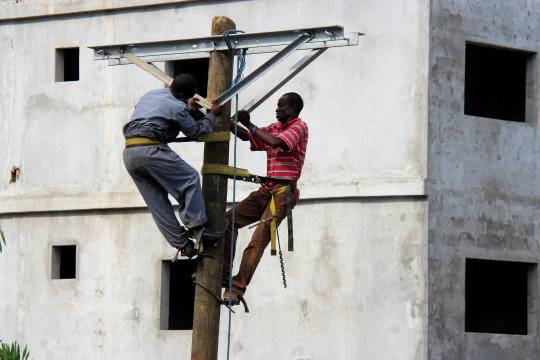I recently saw saw a short video by Helen Clark, Administrator of the United Nations Development Programme, on the United Nations Foundation website, that illustrates how electricity can transform the lives of women and reduce poverty. There is no shortage of evidence to show how electricity can reduce the burden of manual labor for women, freeing them to study, start their own businesses, or invest more in their children. There are also many stories of how solar power and efficient stoves contribute to poverty reduction. These methods work, and I’m all for it. But I can’t help but be frustrated at their scale. It’s great to help people, one family at a time. But wouldn’t it be great if hundreds of thousands of people could get electricity, all at once?
Nowhere is the need for electricity greater than in Sub-Saharan Africa. Half a billion Africans live without electricity — more than half of its population of 910 million and a sizeable percentage of the 1.3 billion people without power globally.
The effort to bring power to so many people, however, seems to be an overwhelming task. According to an article in Handshake, IFC’s quarterly journal on PPPs, there is a funding gap of $20 billion per year between actual capital expenditures in the sector and demand. Governments alone don’t have the necessary resources, and international donors have many competing needs to address. Where might such massive resources come from?
The private sector is the obvious answer, but that leads to even more questions. Why would the private sector invest in the power sector in Africa? There are 47 countries in Sub-Saharan Africa, each with its own unique legislation, business environment, and circumstances. Many are post-conflict; some still have hot spots that make investment risky. The investment climate is generally weak. But the demand is strong, and the development needs high. So how can the private sector be encouraged to participate? Handshake discusses some approaches in a series of articles about power in Africa.
- Public-private partnerships (PPPs) are one part of the answer. PPPs are long-term contracts between public-sector entities and private-sector companies to provide public services and infrastructure. PPPs have been successful at bringing power to post-war Liberia, Cameroon, and other countries.
- Partial risk guarantees (PRGs) are another useful tool. They provide private companies insurance against political risk, which is important if there are doubts about a government’s ability to honor its contractual obligations. The World Bank Group’s Multilateral Investment Guarantee Agency (MIGA) has been active in Africa’s energy sector, providing $1.3 billion of coverage as of June 30, 2013. Handshake points to projects in Kenya, Uganda, and Côte d'Ivoire as examples.
- Power-specific initiatives, such as President Obama’s Power Africa, which aims to double access to power in Sub-Saharan Africa using both on-grid and off-grid solutions, or South Africa’s Renewable Energy Independent Power Producer Procurement Program, which plans to generate 18 gigawatts of renewable energy by 2030.
Clearly, there’s no quick or magic solutions to Africa’s power crisis. But a combination of approaches, implemented with a reasonable target date of 2030, brings the goal of universal access to electricity within reach — especially when the public and private sectors collaborate to make it happen.
Read this next: Africa PPPs, in the latest edition of Handshake.



Join the Conversation